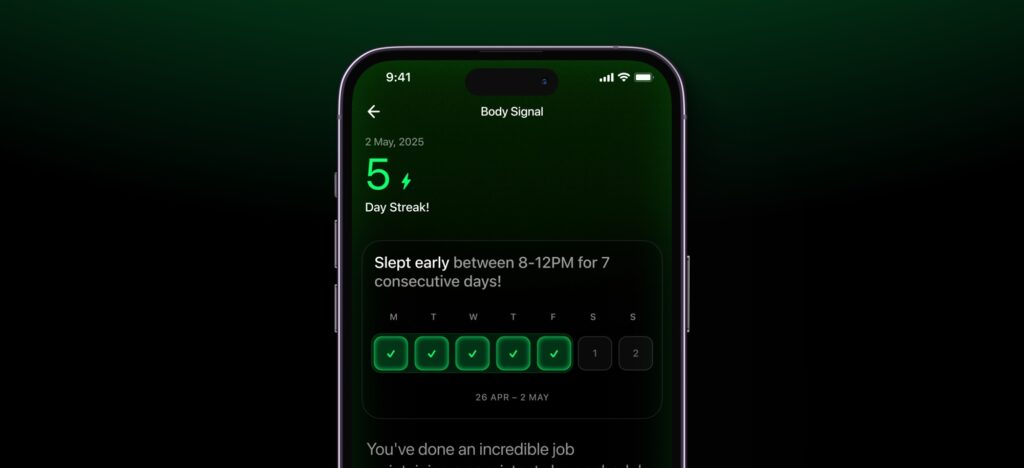Admit it. You’ve lived through most of the pandemic staring at a screen. Or multiple screens. The idea of binge-watching the new season of that show you’ve declared “the best of our times” is what’s getting you through the day, as is the guilty-pleasure meal that will go with it.
Just the mere thought of the cheesy pasta accompanying that murder mystery series makes you feel good right? What you’re experiencing is dopamine being released in your brain.
Simply put, dopamine is a neurotransmitter transmitting signals between the nerve cells of the brain, hence earning the moniker “chemical messenger”. Dopamine plays a big role in your body’s functioning–blood flow, digestion, moods and emotions, motor control and much more.

Highlights
- As is the case with most social media fads, experts suggest that the concept behind ‘dopamine fasting’ has been grossly misinterpreted with people taking it to the extreme,
- Doctors and researchers have reiterated that there is no scientific evidence to support its effectiveness; ‘fasting’ from dopamine–which is essential to the functioning of the human body–is impossible,
- While disengaging from ‘addictive’ or ‘compulsive’ habits may have its own benefits, there are safer ways to practice this.
Now, a fairly recent wellness trend called “dopamine fasting” has created quite a buzz across the world.
The concept, coined by California-based psychiatrist Dr. Cameron Sepah in 2019, aims to “reset your dopamine levels” by asking you to abstain from anything which brings you pleasure–smartphones, social media, Netflix, cheat meal food and even sex, for starters.
What is dopamine fasting all about? Does it work? Here’s breaking it down for you.
What role does dopamine play in the human body?
Before uncovering the many layers of the science behind dopamine fasting, let’s first understand the function of dopamine in the human body.
Dopamine is a neurotransmitter that is created in the brain through a two-step process. First, it changes the amino acid tyrosine to a substance called dopa, and then into dopamine.
Dopamine is strongly associated with ‘pleasure’. Just the mere thought of expecting a reward, or the anticipation of indulging in an activity that brings you pleasure can increase the body’s dopamine levels. For these reasons, it is famously called the “feel-good neurotransmitter”.
This is further explained by Tanya J. Peterson, NCC, DAIS, and mental health educator who says: “It’s part of our reward centre, and when our brain produces dopamine in response to what we do, we feel good and want to do more of whatever it is that’s making us feel so mentally healthy.
That, in turn, leads to even more dopamine production.”
Dopamine also plays a role in various aspects of the body’s neurological, cognitive, and behavioural functions.
These include blood flow, digestion, executive functioning, heart and kidney function, memory and focus, mood and emotions, motor control, pain processing, pancreatic function and insulin regulation, pleasure and reward seeking behaviour, sleep and the stress response.
It can be instrumental in saving lives. Doctors sometimes use prescription dopamine (Inotropin) in cases of low blood pressure, poor cardiac output, poor blood flow to vital organs as well as cases of septic shock.
Research reveals that dopamine also helps to regulate bloood sugar levels. Stimulating a specific part of the brain can increase dopamine activity and help insulin resistance in people with type 2 diabetes.
An imbalance in dopamine levels can have a direct impact on our physical and mental health. A deficiency in dopamine levels may lead to balance issues, changes in weight, muscle cramps, low energy levels, anxiety, mood swings, constipation, tremors, sleep-loss, hallucinations and even a low sex drive.
Low dopamine levels may also lead to serious medical conditions such as Parkinson’s disease and dopamine transporter deficiency syndrome (also known as infantile parkinsonism-dystonia), as well as depression.
On the other hand, high dopamine levels can lead to an increase in concentration and energy levels as well as a higher sex drive.
However, it can also bring about competitive, aggressive behaviour as well as anxiety, stress and sleep problems. A hyperactive dopamine system may lead to schizophrenia, ADHD and drug addiction.
Studies have also indicated that a lack of sleep may also lower the body’s dopamine levels.
This brings us to dopamine fasting. Those following the practice believe that the more they are exposed to the ‘exhilaration of dopamine’, the more they need to seek higher levels of stimulation in order to achieve that level of pleasure.
Sepah claims that dopamine fasting was introduced in an attempt to manage this ‘addictive behaviour’. However, is it really effective? Or just another trend blowing up on social media? Let’s find out.
The science behind dopamine fasting
As researchers have claimed, the evidence derived from this practice is purely anecdotal. When Sepah coined the term, he didn’t expect it to be taken literally.
He even clarified this in an interview with New York Times: “Dopamine is just a mechanism that explains how addictions can become reinforced, and makes for a catchy title. The title’s not to be taken literally”.
Sepah’s research around dopamine fasting was based on cognitive behavioural therapy (CBT) – a form of short-term talk therapy.
The original idea behind the “detox” was to allow people to feel lonely, bored or to take on simpler activities without automatically reaching for quick “hits” or fixes of dopamine–for instance via texts, notifications, rings–in short, reward-inducing cues.
By doing this, people would recognize the unhealthy stimuli distracting them, and allow their brains to take breaks and reset from what can be considered “potentially addictive behaviour”. This would allow them to regain control and better address and manage impulsive behaviours.
The impulsive behaviours which he targets through dopamine fasting, those that he believes are “commonly problematic and prone to addiction” are emotional eating, excessive internet usage and gaming, gambling and shopping, porn and masturbation, thrill and novelty-seeking, and recreational drugs.
However, as is the case with most viral trends, people took dopamine fasting, what many are calling a “Silicon Valley fad”, to an extreme level. Misinterpreting the concept, they started practising a “total break” from just about anything bringing them pleasure–social media, sex and even human interaction.
This was in the hopes that these experiences would be more vivid when consumed after a period. As Sepah himself has reiterated, it doesn’t work that way.
He also wrote that dopamine fasting has been a great opportunity to teach people a behavioural therapy technique to manage impulsive behaviours (like excessive internet/gaming) by intentionally withdrawing from them for periods of time at the end of each day, week, quarter, and year.
Dopamine fasting IS NOT: an avoidance of dopamine, anything stimulating, or a silent meditation retreat in which you’re not allowed to do anything or talk to anyone.
Criticism behind dopamine fasting
Many psychiatrists believe that fasting from dopamine would be both impossible and fatal to the brain. They also state that avoidance of pleasure-seeking activities doesn’t necessarily reset the body’s dopamine levels.
Explaining this further, Dr Fabian Almeida, Consultant Psychiatrist, Fortis Hospital, Kalyan told a publication: “Scientifically speaking, you can’t really ‘fast’ from a naturally occurring brain chemical.
While dopamine does rise in response to rewards or pleasurable activities, it doesn’t actually decrease when you avoid over stimulating activities, so dopamine fasting doesn’t actually lower your dopamine levels.”
Many also believe that dopamine fasting is the new term given to the age-old practice of ‘mindfulness’, incorporated largely by some health professionals in the treatment of addiction.
Furthermore, by taking the fad to an extreme–like the avoidance of human interaction, dopamine fasters are denying themselves important healthy activities.

Benefits of dopamine fasting
While we have established that the idea of a ‘complete break’ or ‘dopamine fasting’ is impossible, the attempt to detach from compulsive behaviours, the original thought behind the practice, do offer some health benefits–for starters, heightened focus and greater mental clarity.
Also, avoiding addictive behaviours such as mindless scrolling through social media will bring stress relief, lower blood pressure, and improved sleep.
Dopamine fasting helps manage the tides of ‘instant gratification’. One of the techniques employed by Sepah in this practice is “stimulus control”. This aims to remove the stimulus that encourages impulsive behaviour so that one doesn’t have to rely purely on willpower.
For instance, instead of just willing yourself to stop doomscrolling on Twitter, you can put your phone out of reach and make it harder to access as part of your fast.
Another technique is exposure and response prevention. The idea behind it is that you can practice exposing yourself to a trigger, but you don’t have to follow through with the expected behaviour.
So here, you can practice feeling the maddening need to check Twitter but then choose to go and do something else instead. Sepah also stresses the fact that there are no fixed rules around dopamine fasting, you can do it for as little as one to four hours at the end of the day, to one week in a whole year!
How to dopamine fast the right way?
While medical professionals are sceptical about the fast, they have said that taking out some time during the day, week or year to abstain from addictive or bad behaviour does accrue benefits.
While the right way to fast is subjective, Sepah directs a simple way to start: to first choose a behaviour you want to fast from. Abstain from said behaviour for one hour a day which can turn into four hours a day in time.
Abstain from it for one weekend day per week (Saturday or Sunday); then one weekend per quarter and eventually, one week a year.
For those looking to minimize a selected behaviour to as little time as possible, they can follow a feasting schedule where the time allotted to engage in the said behaviour is 5-30 minutes, 1-3 times a day.
Studies suggest that dopamine plays a role in motivation control along with the other happy hormones, namely – oxytocin, serotonin and endorphins. While addiction is a complex disorder, dopamine plays a role when one develops tolerance to the addicted substance.
Tolerance refers to the point at which one ceases to experience the effects of the ‘drug’ despite consuming the same amount. When the ‘reward centre’ is overwhelmed, the brain tries to either scale down the production of the neurotransmitter or minimise dopamine receptors.
It elicits a feeble ‘pleasure’ response but the craving remains and one needs more of the substance to satisfy the yearning.
Professionals are of the opinion that while people will not find a complete solution in dopamine fasting, it is an important element in resisting temptation.
Many adhere to dopamine fasting in an attempt to break their bad habits. However, there are less extreme ways of achieving this–mindfulness and meditation for starters; practices that won’t have you scuttling away if someone tries to make eye contact!
Conclusion
The original idea behind dopamine fasting may have been a noble one–disconnecting from unhealthy stimuli to reconnect with oneself and managing compulsive behaviours.
However, people have taken it to an extreme by practising complete avoidance of anything and everything bringing them pleasure–including even human interaction and eye contact! Not only is this harmful in various ways, it also doesn’t actually reset dopamine levels in the body.
Experts suggest that dopamine is essential to the body and ‘fasting’ from it would be fatal.
Moreover, doctors and psychiatrists have clearly stated that dopamine fasting is impossible because abstaining from pleasure activities does not reduce the dopamine levels in the body.
While many began to follow this wellness fad in a bid to break a cycle of bad habits, doctors and healthcare professionals have suggested that they look more towards tried and tested practises, for instance, mindfulness and meditation, instead.
Disclaimer: The contents of this article are for general information and educational purposes only. It neither provides any medical advice nor intends to substitute professional medical opinion on the treatment, diagnosis, prevention or alleviation of any disease, disorder or disability. Always consult with your doctor or qualified healthcare professional about your health condition and/or concerns and before undertaking a new health care regimen including making any dietary or lifestyle changes.
References
- Evidence That Sleep Deprivation Downregulates Dopamine D2R in Ventral Striatum in the Human Brain – PMC
- How to Feel Nothing Now, in Order to Feel More Later – The New York Times
- Dopamine fasting: Misunderstanding science spawns a maladaptive fad – Harvard Health
- Why the Media Lies to You about Dopamine Fasting | by Dr. Cameron Sepah
- Dopamine and Addiction: Separating Myths and Facts








